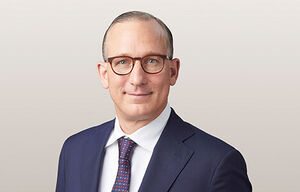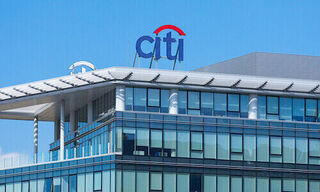Not all assets are fragile. Some even profit from chaos and uncertainty. Those are the ones one ought to engage in instead of trying to predict the unpredictable, says Didier Saint-Georges in an essay for finews.first.
This article is published on finews.first, a forum for authors specialized in economic and financial topics.
A lot of financial market watchers, both professionals and amateurs, are having a devil of a time trying to figure out where markets are heading. Governments are going all out – the latest EU agreement on a common recovery package being a highly significant example. Central banks are providing extraordinary backstops.
At the same time, the pandemic-induced shock wave has created tremendous economic uncertainty. So how exactly can equity investors make head or tail of all this? What asset allocation will best serve their interests now that stock markets are recovering but in a climate of overall uncertainty?
«Fortunately, there is an iron law that should enable investors to deal with such extreme uncertainty»
A convenient and frankly lazy way out is to use never-ending «central-bank intervention» as an excuse for whatever your approach may be. The fact of the matter is that no one – including central bankers – really knows all the consequences of endlessly expanding the money supply to pay for oversized fiscal deficits, not to mention how it will play out in the long term.
It’s worth recalling that when central banks made their first foray into large-scale financial asset purchases in 2009, the vast majority of economists warned that such unconventional monetary policies would drive inflation through the roof. They did no such thing. On the contrary, interest rates began a decade of dizzying decline. So even back then, nobody had a serious grip (to put mildly) on the economic processes and market shifts set in motion by those policies.
Now fast forward to ten years later, and add the threat of a mysterious worldwide virus into the equation. Plainly what’s called for is humility in the face of the unknown and a willingness to refrain from sweeping forecasts – almost invariable built on sand.
Fortunately, there is an iron law that should enable investors to deal with such extreme uncertainty: not all financial assets are fragile. In fact, some of them can not only withstand uncertainty (or even chaos), but may even thrive on it. Essayist Nassim Nicholas Taleb has referred to them as «antifragile» assets. That’s the place to be, instead of trying to predict the unpredictable. The challenge is determining which assets fit the bill.
«To understand why we need to go back ten years»
In current circumstances, tech companies and gold can be considered antifragile, which explains their high share prices today.
To understand why we need to go back ten years. What the record shows since 2009 is that financial asset prices are the only area in which monetary expansion has produced inflation. And it isn’t hard to see why. All the vast resources created by monetary policy, which were supposed to inflate consumer prices, didn’t carry much weight in the end against the powerful deflationary forces at work. Excessive debt loads have stifled demand; globalization has fuelled price competition; population aging has led to higher savings rates; and new technology has paid off in the form of rising productivity. In other words, the «inflationary power» of expanding the money supply got channeled by default into equity and bond prices.
The use of monetary policy to deal with economic crisis has, therefore, proved most beneficial to investors – particularly those with holdings in the sectors most directly related to the irresistible deflationary trends underway. Noteworthy examples obviously include tech companies with no debt or even abundant cash flow, as well as healthcare providers that are making money on an aging population and large, globally integrated firms that have powered the trend towards international supply chains.
«Yet another piece has been added to the puzzle in 2020»
Meanwhile, the shares of manufacturing companies and banks, which need a booming economy to be able to generate operating profits and invest for the long term, have been withering on the vine. The upshot of this polarisation in equity-market behavior is that so-called cyclical companies, whose fortunes vary with economic growth, have very little weight today in the major market indices.
In contrast, tech and healthcare names, whose share prices don’t reflect the strength of the economy, but rather its deflationary torpor, are now over-represented. So what does today’s high-flying stock market tell us? Simply that investors who are positioned to take advantage of a sorry state of macroeconomic affairs are doing well.
Yet another piece has been added to the puzzle in 2020: Covid-19. Though how the pandemic will evolve is anyone’s guess, not only is it already accelerating existing deflationary trends, but it is also reshaping consumer behavior, perhaps lastingly so. How have markets adjusted to this extra dose of uncertainty? First, as could be expected, investors have stepped up their positions in sectors that «like» the deflationary pressures created by economic uncertainty.
«Investors, then, have themselves defined what optimal asset allocation is in times of extreme uncertainty»
Second, they have focused, within those antifragile sectors, on companies whose profit margins are clearly being boosted by changes in consumer behavior such as greater home working opportunities, video gaming, the cloud, e-commerce and a concern for the environment.
Third and last, responding to the unprecedented degree of uncertainty today (regarding the business cycle, inflation, politics and geopolitics, and exchange rates), they have shifted the rest of their holdings into another antifragile asset called gold – the traditional multi-risk insurance policy.
Since the start of the year, the two most lucrative bets, though they aren’t really bets at all, have been the Nasdaq Composite, which is weighted towards IT companies and has gained 25 percent, and the Gold Miners Index, which is up 35 percent. Investors, then, have themselves defined what optimal asset allocation is in times of extreme uncertainty – when only fools would rely on economic forecasts.
Didier Saint-Georges is managing director at Carmignac. He joined the French asset manager in 2007 and he is since 2018 a member of the strategic investment committee. He started his career in 1983 in aircraft financing at Citibank.
Previous contributions: Rudi Bogni, Peter Kurer, Rolf Banz, Dieter Ruloff, Werner Vogt, Walter Wittmann, Alfred Mettler, Peter Hody, Robert Holzach, Craig Murray, David Zollinger, Arthur Bolliger, Beat Kappeler, Chris Rowe, Stefan Gerlach, Marc Lussy, Nuno Fernandes, Richard Egger, Maurice Pedergnana, Marco Bargel, Steve Hanke, Urs Schoettli, Ursula Finsterwald, Stefan Kreuzkamp, Oliver Bussmann, Michael Benz, Peter Hody, Albert Steck, Martin Dahinden, Thomas Fedier, Alfred Mettler, Brigitte Strebel, Peter Hody, Mirjam Staub-Bisang, Nicolas Roth, Thorsten Polleit, Kim Iskyan, Stephen Dover, Denise Kenyon-Rouvinez, Christian Dreyer, Kinan Khadam-Al-Jame, Robert Hemmi, Anton Affentranger, Yves Mirabaud, Katharina Bart, Frédéric Papp, Hans-Martin Kraus, Gerard Guerdat, Mario Bassi, Stephen Thariyan, Dan Steinbock, Rino Borini, Bert Flossbach, Michael Hasenstab, Guido Schilling, Werner E. Rutsch, Dorte Bech Vizard, Adriano B. Lucatelli, Katharina Bart, Maya Bhandari, Jean Tirole, Hans Jakob Roth, Marco Martinelli, Thomas Sutter, Tom King, Werner Peyer, Thomas Kupfer, Peter Kurer, Arturo Bris, Frederic Papp, James Syme, Dennis Larsen, Bernd Kramer, Ralph Ebert, Armin Jans, Nicolas Roth, Hans Ulrich Jost, Patrick Hunger, Fabrizio Quirighetti, Claire Shaw, Peter Fanconi, Alex Wolf, Dan Steinbock, Patrick Scheurle, Sandro Occhilupo, Will Ballard, Michael Bornhaeusser, Nicholas Yeo, Claude-Alain Margelisch, Jean-François Hirschel, Jens Pongratz, Samuel Gerber, Philipp Weckherlin, Anne Richards, Antoni Trenchev, Benoit Barbereau, Pascal R. Bersier, Shaul Lifshitz, Klaus Breiner, Ana Botín, Martin Gilbert, Jesper Koll, Ingo Rauser, Carlo Capaul, Claude Baumann, Markus Winkler, Konrad Hummler, Thomas Steinemann, Christina Boeck, Guillaume Compeyron, Miro Zivkovic, Alexander F. Wagner, Eric Heymann, Christoph Sax, Felix Brem, Jochen Moebert, Jacques-Aurélien Marcireau, Peter Hody, Ursula Finsterwald, Claudia Kraaz, Michel Longhini, Stefan Blum, Zsolt Kohalmi, Karin M. Klossek, Nicolas Ramelet, Søren Bjønness, Lamara von Albertini, Andreas Britt, Gilles Prince, Darren Willams, Salman Ahmed, Stephane Monier, and Peter van der Welle, Beat Wittmann, Ken Orchard, Christian Gast, Didier Saint-Georges, Jeffrey Bohn, Juergen Braunstein, Jeff Voegeli, Gérard Piasko, Fiona Frick, Stefan Schneider, Matthias Hunn, Andreas Vetsch, Fabiana Fedeli, Marionna Wegenstein, Kim Fournais, Carole Millet, Ralph Ebert, Lars Jaeger, Swetha Ramachandran, Brigitte Kaps, Thomas Stucki, Teodoro Cocca, Neil Shearing, Claude Baumann, Guy de Blonay, Tom Naratil, Oliver Berger, Robert Sharps, Santosh Brivio, Tobias Mueller, Florian Wicki, Jean Keller, Fabrizio Pagani, Niels Lan Doky, Michael Welti, Karin M. Klossek, Ralph Ebert, Johnny El Hachem, Judith Basad, Katharina Bart, Thorsten Polleit, Beat Wittmann, Bernardo Brunschwiler, Peter Schmid, Karam Hinduja, Stuart Dunbar, and Zsolt Kohalmi.

























